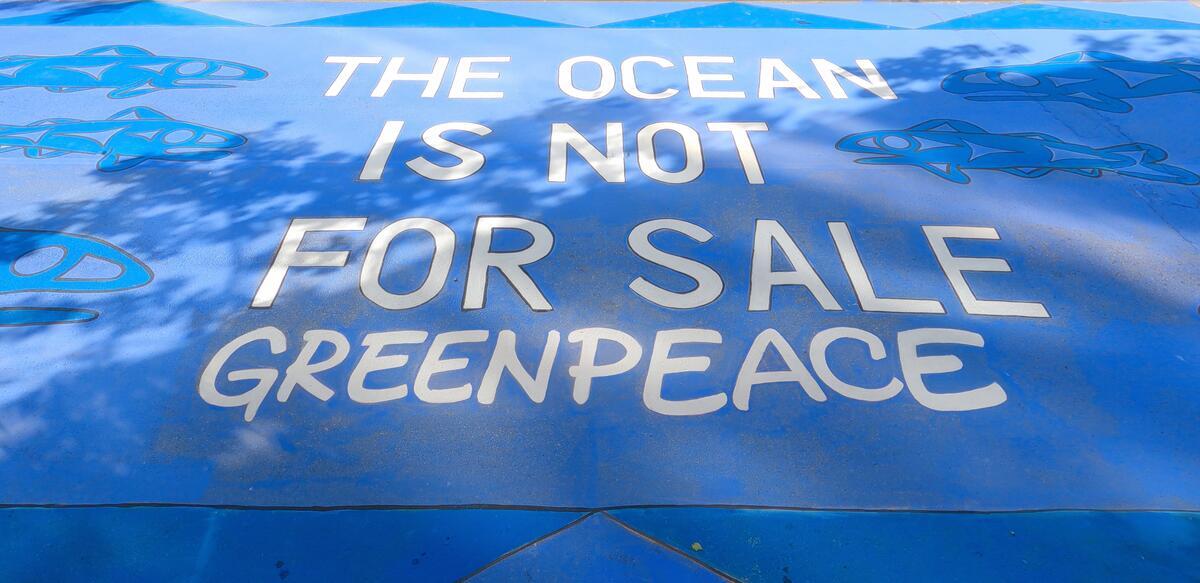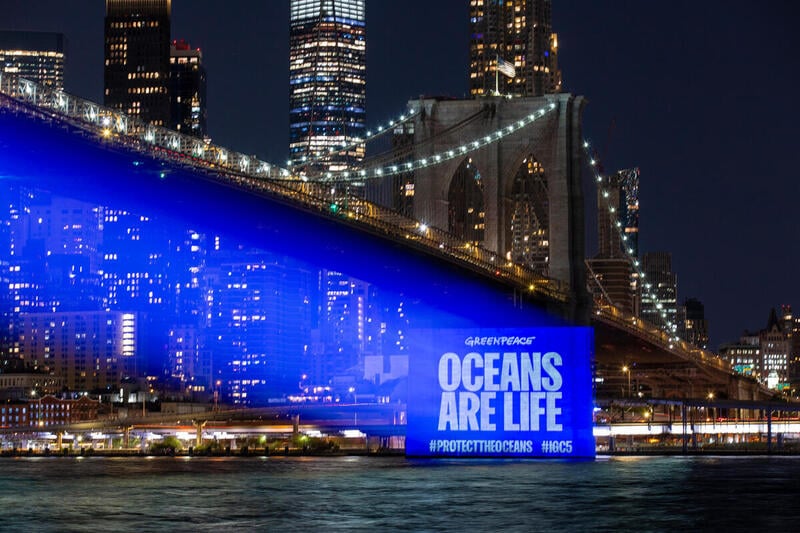Oceans are the lungs of our planet, providing half of the oxygen we breathe. Despite this critical service, we are rapidly strangling our oceans with a steady stream of pollution in the form of discarded single-use plastic and fishing nets/gear. Plastic pollution jeopardizes the health of our oceans and their ability to breathe for the planet.
It’s time that we connect the dots and push for deep, systemic changes to fight ocean pollution today so that we can all have a tomorrow. Let’s start by answering a few questions.
How much plastic is in the ocean?
According to estimates, from 1950 to 2017, humanity produced approximately 9.2 billion tonnes of plastic. This is roughly equivalent to the mass of 1.2 billion elephants or 88 million blue whales. [1]
Due to the combination of mass production and poor waste management, up to 12.7 million metric tonnes of plastic pollution end up in the oceans every year. [2] Unfortunately plastic in the ocean does not magically dissolve one day. It disperses along the shorelines, enters ocean currents, or gets concentrated in ocean gyres, and ultimately much of it breaks into small pieces called microplastics.
Plastic pollution is ubiquitous – it is found 10,898 metres deep in the Mariana Trench – the deepest place on Earth – on uninhabited mountain tops, in the air we breathe and in the water we drink. [3]
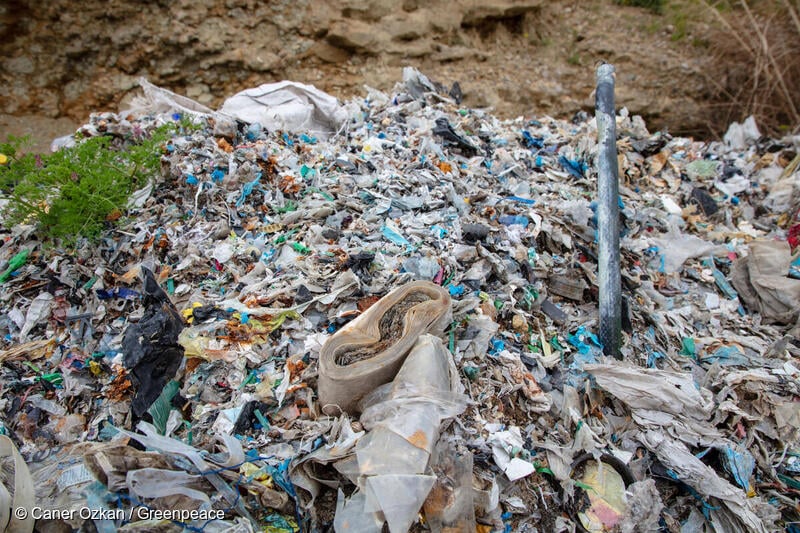
How does plastic get into the ocean?
Although the sources of plastic pollution in the ocean are both land and marine-based, estimates indicate that between 60 and 80 percent of ocean pollution comes from land-based sources and 20 to 40 percent from fishing. The United Nations Environment Programme (UNEP) suggests that abandoned, lost, or discarded fishing gear constitutes about 10 percent of total ocean plastics. Other resources demonstrate a slightly higher percentage of marine input.
While estimates may vary, it’s still clear that land-based sources are by far the most significant contributors to ocean plastic pollution, followed by so-called ghost gear (deliberately or accidentally abandoned fishing nets and lines). Having identified the leading causes of ocean pollution, it’s time to determine what needs to be changed accordingly.
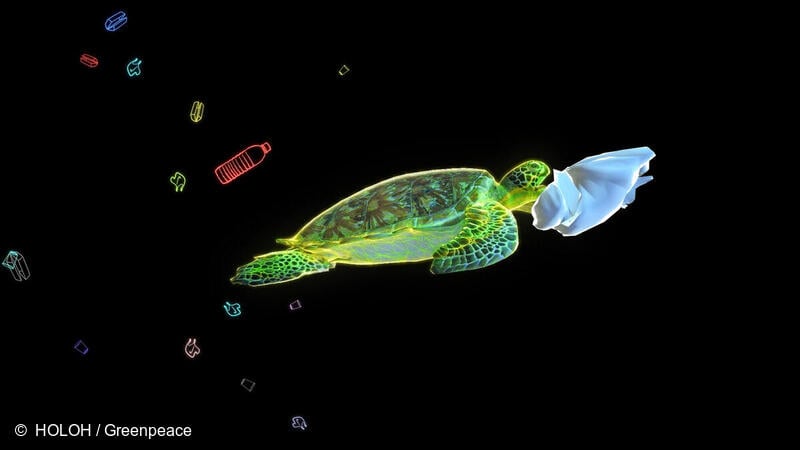
Does going vegan help to protect the oceans?
In an attempt to sound the alarm about ocean health, the mainstream documentary Seaspiracy has recently promoted the idea that the only way for us to protect the oceans is by going vegan. Adjusting our eating habits for the sake of our health and the benefit of our planet is a tool that many, here, in the Global North can exercise. However, a vegan, fish-free diet is not a panacea. Treating it as such unfairly stigmatizes and undermines food security and economic prosperity in many places of the Global South and fails to differentiate between subsistence fishers and industrialized fishing.
The idea of veganism to stop the collapse of the oceans only addresses one aspect of oceanic health. The amount of plastic pollution flowing into the oceans is immense and the contributions to that from fishing are but a small portion of the total. We can never hope to fix ocean plastic pollution with weekend beach cleans. The scale of the problem dictates that global governments accept responsibility for implementing comprehensive solutions that address the devastating impacts of industrialized fishing AND stopping land-based ocean plastic pollution at the source by eliminating single-use plastics.
What has been done by the government so far to stop ocean pollution?
In May 2021, the federal government added plastic manufactured items as toxic under Schedule 1 of the Canadian Environmental Protection Act (CEPA). This was the crucial first step towards single-use plastic regulation in Canada, however, the addition itself is meaningless without further actions. The addition of plastic items to Schedule 1 allows the federal government to create regulations to manage “plastic manufactured items” by restricting their use and transport. Unfortunately, not only are the proposed regulations not yet drafted, their scope will impact only 6 single-use items, excluding some of the most common plastic items such as cigarette butts and hot beverage cups and lids. As-is, the proposed regulation is estimated to affect only 1% of Canadian’s single-use plastic waste. That’s why Greenpeace is advocating for the elimination of all the most commonly found polluting, single-use plastic items, and for commitment to investing in refill and reuse alternatives to conventional disposable packaging. False industry solutions like recycling, bioplastics, and other disposable alternatives must be put aside for solutions that will actually reduce pollution and dirty carbon emissions.
The same applies to marine-based pollution. Fishing itself is not a problem, but industrialized fishing is a global catastrophe. The United Nations has recognized that oceans remain a blind spot when it comes to their governance: Sixty-four percent of oceans fall outside the jurisdiction of any country. This is why we need the Global Oceans Treaty, currently being negotiated, which will help to create ocean sanctuaries covering at least 30% of international waters by 2030. One step in that direction was made in July 2020 when Canada joined an international group of 22 countries to protect oceans committed to the UN target of 30% marine protected areas globally by 2030. Again, it was a good first step but more needs to be done.
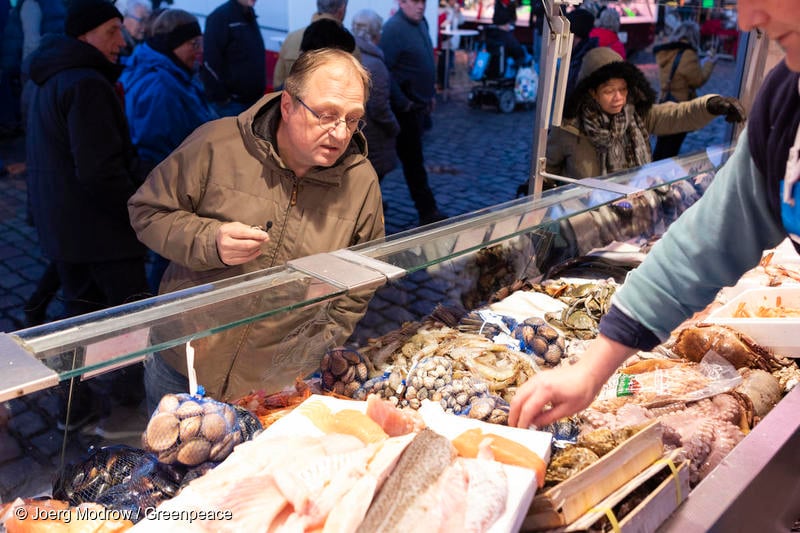
What can we do to stop plastic pollution in the oceans?
Being fully aware of the two primary threats to the health of our oceans – plastic pollution and industrialized fisheries – we need to stop relying on piece-meal fine-tuning measures. It is time for the government to redirect its energy and resources from small-scale efforts to long-term solutions. We need the federal government to send a bold message to corporations that the time of the plastics-dependent economy is over now.
If we continue down this road, the amount of plastic entering oceans and waterways is projected to reach up to 90 million tonnes by 2030. [5] It’s clear we can no longer afford to be silent; the price is too high. To stop plastic pollution and end our dependence on climate-harming fossil fuels the government must stop pretending plastic recycling is real. Tell the government it’s time to end reliance on the planet-harming “take-make-waste” production and consumption model and secure ourselves a future!
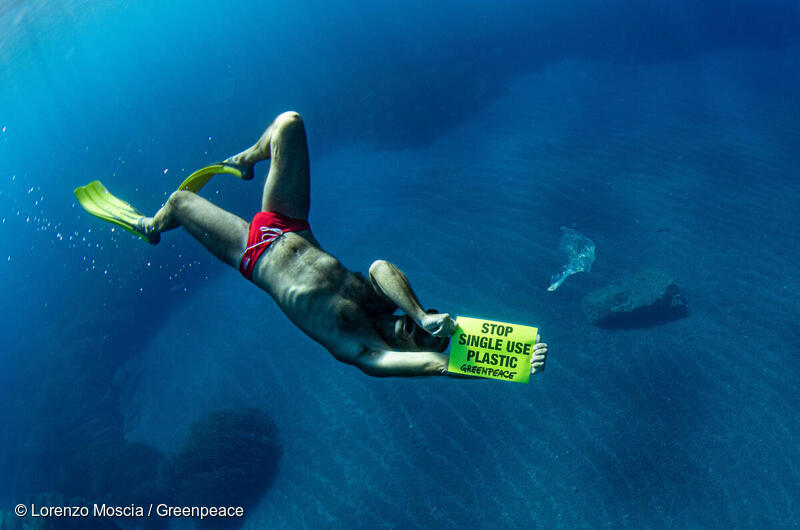
[1] Geyer, R. (2020). Chapter 2 in: Plastic Waste and Recycling, Letcher T M (Ed.), Academic Press, Cambridge, MA, USA (March 2020) Production, use, and fate of synthetic polymers
[2] Jambeck, Geyer, et al. Plastic waste inputs from land into the ocean. Science 347, 6223, 768–771 (2015) DOI: 10.1126/science.1260352
[3] Chiba S, Saito H, Fletcher R, Yogi T, Kayo M, Miyagi S, Ogido M, Fujikura K. Human footprint in the abyss: 30 year records of deep-sea plastic debris. Marine Policy 96, 204-212 (2018). doi:10.1016/j.marpol.2018.03.022
[4] Lebreton, L., Slat, B., Ferrari, F., Sainte-Rose, B., Aitken, J., Marthouse, R., … & Noble, K. (2018). Evidence that the Great Pacific Garbage Patch is rapidly accumulating plastic. Scientific Reports, 8(1), 4666. Available at: https://www.nature.com/articles/s41598-018-22939-w.
[5] Borrelle et al. Predicted growth in plastic waste exceeds efforts to mitigate plastic pollution. Science 369, 1515-1518 (2020). DOI: 10.1126/science.aba3656

